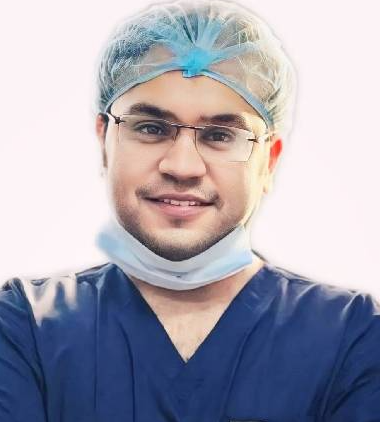Vertebroplasty: Surgery, Procedure, Treatment and Risks

Treatment Duration
45 Minutes
------ To ------60 Minutes
Treatment Cost
₹ 1,10,000
------ To ------₹ 4,00,000

Table of Contents
- What is Vertebroplasty?
- Anatomy and physiology of Vertebrae
- Conditions treated with Vertebroplasty
- Who needs Vertebroplasty?
- How is Vertebroplasty performed?
- What to Expect Before and On the Day of Vertebroplasty?
- What to Expect After Vertebroplasty?
- Risks and Complications of Vertebroplasty
- Risks of delayed Vertebroplasty
Galibert and colleagues first described vertebroplasty in 1987. It is one of the most common treatment options for vertebral fractures in patients who are non-responsive to non-invasive medical therapies. Vertebroplasty is a minimally invasive procedure done under imaging guidance wherein the surgeon injects the bone cement in between the fractured vertebra to help improve pain and stabilise the fracture.
You can check Vertebroplasty Cost here.
What is Vertebroplasty?
Vertebroplasty is a minimally invasive procedure done under imaging guidance wherein the surgeon injects the bone cement in between the fractured vertebra to help improve pain and stabilise the fracture.
Expert Doctors (10)
NABH Accredited Hospitals (10)


Anatomy and physiology of Vertebrae
The vertebral column is also known as the backbone or the spine. It starts from the neck and ends at the pelvis. It comprises 33 individual bones. These bones are known as vertebrae. There are 7 vertebrae in the cervical region, 12 in the thoracic region, 5 in the lumbar region, 5 (fused in sacral region), and 3 in the caudal region.
The vertebral column performs several functions. It provides structural support to several body organs, including the head, chest, and shoulders. It provides the site for the attachment of ligaments, tendons, and muscles. It protects the spinal cord and nerve roots along with several internal organs. It also imparts flexibility and mobility to the body, including forwarding bending, backward bending, and side bending.
Conditions treated with Vertebroplasty
Vertebroplasty is an outpatient procedure that can be used to treat the following conditions like:
- Compression fractures of the spine
- Osteoporosis (loss of calcium in bones)
- A metastatic tumour (cancer that spreads from somewhere else)
- Multiple myeloma (cancer of the bone marrow)
- Vertebral hemangioma (benign vascular tumor)
Who needs Vertebroplasty?
Vertebroplasty is done to treat compression fractures of the spine. The fractures in the spine may be due to spinal injuries, osteoporosis, and cancer of the spine. Vertebroplasty is performed in patients with spine fractures who have failed to respond to medical therapies, such as a back brace, bed rest, or pain medications, after a 4 to 6-week course. Patients may also be considered non-responsive if they discontinue medications due to side effects.
How is Vertebroplasty performed?
There may be several variations in the procedure of vertebroplasty. However, the most common steps for performing vertebroplasty are as follows:
- The patient is taken to the operating room and is asked to lie in a prone position (lying on the abdomen face down).
- Vertebroplasty is performed under local anaesthesia and conscious sedation in most cases. However, in some cases, such as when the patient is not comfortable lying in a prone position, the procedure is done under deep sedation.
- The surgeon sterilises the site of the injection.
- The procedure is performed under fluoroscopy guidance to improve the procedure's outcome and minimise complications. In addition, contrast-enhanced fluoroscopy is implemented that provides real-time images to the surgeon.
- The surgeon
- Creates a small puncture in the skin with a small needle and guides it to the fractured vertebra. It is necessary to do the procedure under imaging guidance to avoid damage to other critical areas of the spine.
- Injects a special type of bone cement, known as polymethyl methacrylate (PMMA), into the cracks in the spine, fills the gap, and stabilises the bone.
- Removes the needle and allow the cement to settle (harden). The cement hardens in about 10 minutes.
- Applies the manual pressure for some time to reduce the risk of hematoma.
- Place the sterile dressing.
- In some cases, advise the patient to lie for a few minutes to make the cement more settled.
During Verebroplasty
You may expect the following during vertebroplasty:
- The paramedical staff then inserts the IV line to administer the drugs during and after the procedure.
- You will be given local anaesthesia. If there is a need, the surgeon may also provide mild sedatives.
- The vital parameters are under monitoring throughout the procedure.
- After the complete effect of the local anaesthesia, the surgeon initiates the procedure.
What to Expect Before and On the Day of Vertebroplasty?
You may expect the following before the surgery:
The surgeon may :
- Ask you to undergo a pre-anaesthesia check-up to determine your suitability for undergoing the anaesthesia during the procedure.
- Inquire about the medical history and any medications you are taking.
- Provide you with the tentative surgery date subject to the results of the pre-anaesthesia check-up and other tests.
- Provide detailed information about the surgery procedure and the type of anaesthesia you may have during the procedure.
- The final date of the surgery will be informed to you by the medical staff on the phone if all your tests are normal.
- The doctor may not recommend holding anti-inflammatory drugs or aspirin before the procedure. However, if the patient is on clopidogrel, the doctor may recommend avoiding it
- The doctor will perform a comprehensive neurological examination and document the results. Further, the surgeon will also review the diagnostic imaging tests to rule out any other causes of back pain like degenerative disc disease, spinal stenosis, facet disease, or infection.
- The surgeon will also provide information about the cost, days of hospital stay, and the recovery period.
- You should avoid eating anything at least 6 hours before the surgery. However, the doctor may allow you to drink a small amount of water within 2 hours before the surgery.
On the day of Verebroplasty
You may expect the following on the day of surgery:
- You should visit the hospital before the scheduled time to complete the formalities and get accustomed to the hospital environment.
- You should avoid wearing jewelry, watches, and dentures while visiting the hospital for vertebroplasty.
- The staff may ask you to sign the consent form and other formal documents and pay the procedure fee.
- The staff will record the previous diet.
- The paramedical staff will take your vitals, such as blood pressure, oxygen levels, and heartbeat.
- The staff advises you to change your clothes and wear a hospital gown.
- If all the vitals are normal, you would be shifted into the operation theatre.
What to Expect After Vertebroplasty?
The Recovery Process in the Hospital:
- After the surgery is completed, the staff will shift you to the intensive care unit.
- All the vitals are checked, and the surgeon will also perform a neurological examination and compare the results with the results recorded before surgery.
- The staff will transfer you to the general ward once the vitals are normal and there are no neurological issues.
- The surgeon prescribes antibiotics to prevent infection and prescribes analgesics to manage pain.
- The doctor may advise you to lie for a few hours after the surgery. You may then be allowed to walk around slowly.
- The doctor may discharge you on the day of surgery if there are no complications.
- Detailed instructions regarding care at home are provided at the time of discharge.
Recovery process/expectation after hospital discharge
- It is recommended to take good care at home for faster recovery.
- You should gradually increase your daily activities.
- You may apply ice pack to get relief if you have soreness at the site of the injection.
- There may be relief from pain within 24 to 48 hours after the surgery. However, do not discontinue medications in between, even if there is relief from pain.
- Avoid strenuous activities, such as exercise or lifting heavy objects, for at least six weeks.
First follow-up appointment
- The first follow-up visit is usually 15 days after the procedure.
- The doctor will evaluate your pain and mobility during the follow-up visit.
- Any complications due to the procedure are also evaluated.
Risks and Complications of Vertebroplasty
Like any other procedure, vertebroplasty also has certain risks and complications. It is necessary that you should not ignore the symptoms and consult the doctor as soon as possible. Some of the symptoms for which you need to consult the doctor are:
- Blood loss
- Hematoma
- Fever
- Infection
- Cement flowing out
- Irritation of the nerve root
- Any other symptoms that are the cause of concern
Risks of delayed Vertebroplasty
If vertebroplasty is delayed:
- For over eight weeks after the fracture, the procedure is less likely to provide significant relief from pain.
- Chronic pain reduces the quality of life and may also cause blood clot development due to reduced mobility and increased morbidity and mortality.
- Untreated fractured vertebrae may lead to more serious complications, including acceleration of osteoporosis, respiratory problems, deep vein thrombosis, loss of height and emotional or social issues.
More Treatment options
Last Updated on: 3 October 2022
Author
HexaHealth Care Team
HexaHealth Care Team brings you medical content covering many important conditions, procedures falling under different medical specialities. The content published is thoroughly reviewed by our panel of qualified doctors for its accuracy and relevance.






















